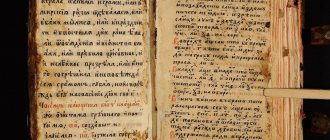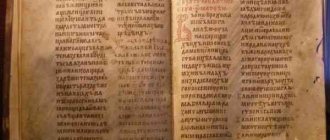Estate structure
In the 17th century, the clergy was considered the second most important among all classes. Only the feudal lords were more powerful. The role of the clergy was very serious. Orthodoxy was considered one of the foundations of autocracy, so the Russian tsars needed the support of the church. In this regard, they provided many privileges and made many concessions.
By this time the clergy was divided into black and white. The latter consisted of priests who did not take monastic vows. In other words, he had the right not to remain celibate and could marry and have children. Representatives of the black clergy - monks - were deprived of this opportunity. The clergyman made such a decision independently and, before taking the rank, finally confirmed his intentions. Each branch had certain rights and responsibilities. The white clergy outnumbered the black clergy. Also, by the end of the 17th century, a strict hierarchical ladder in the class had developed.
For the white clergy it looks like this:
- Patriarch
- Metropolitan
- Bishop/Bishop
- Priest/Archpriest
- Deacon/Protodeacon.
For black:
- Patriarch
- Metropolitan
- Bishop
- Archimandrite/Hegumen
- Hierodeacon/Hieromonk
As a result, both white and black clergy submitted to the Patriarch. He had unlimited rights.
Rights of white and black clergy
The priests had the right:
- get married and have families;
- have a personal home and household;
- serve in a specific church. In the 17th century, very often ministry in a particular church was inherited from father to son.
Rights of monks:
- live and work on the territory of the monastery;
- use common property, monastery lands and serfs. When taking monastic orders, clergy lived in the brethren and did not have personal material or land wealth.
Responsibilities
The white clergy was obliged to preach the word of God and bring it to the masses. In other words, conduct services in the temple, talk with parishioners. Also, the duties of the priests included conducting sacred sacraments.
It was the responsibility of the black clergy to set an example of service to God that was selfless and voluntary. The monks doomed themselves to an ascetic lifestyle with hardships and constant prayers.
Publications
From the end of the 17th century, the state placed the clergy at its service. Priests had to teach parishioners to obey the laws and decrees of secular authorities; confessions were used as a means of revealing criminals and conspirators. Attempts to turn the clergy into bureaucrats were accompanied by legal restrictions that turned them into a closed class.
In the fifteenth episode of his investigation, candidate of historical sciences, deputy of the State Duma of the first convocation, Alexander Minzhurenko, talks about the rights, privileges and relationships with the state of the clergy during the synodal period of the history of the Russian Orthodox Church, which stretched for almost three centuries.
The restriction of the rights of the clergy by the Council Code of 1649, Nikon's reforms, the split of the church, the secularization of church lands and, finally, the liquidation of the patriarchate - all this happened quite quickly and dealt a terrible blow to the Russian Orthodox Church. The Orthodox clergy found itself in a completely new legal situation. A long - until 1917 - synodal period in the history of the Russian Church began.
The activities of the Holy Synod were supervised by the chief prosecutor appointed by the emperor, who later turned from a controller into the head of the department. The clergy especially did not like this and even offended their feelings: the supreme governing body of the church was headed by an official - a person who did not have any clergy title.
Having actually included priests in the category of civil servants, and taking them into government pay, the state behaved towards the clergy in exactly the same way as towards other components of the state apparatus.
The government sought to reduce the cost of financing this structure by banning the construction of new churches and taking measures to “downsize” the ecclesiastical department. Thus, the bishops, upon accepting the cathedra, had to give an oath that “neither they themselves nor will they allow others to build churches beyond the needs of the parishioners.” The bishops were ordered not to appoint new priests while the old ones were alive.
During this period, the state, firstly, contributed to the transformation of the clergy into a closed class, i.e. prevented people from other walks of life from joining its ranks. This class thereby acquired caste features.
Previously, the lower parish clergy was selective. The parishioners usually chose from among themselves a person who seemed suitable for the priesthood, gave him a letter of choice and sent him to be “placed” with the local bishop. During the synodal period, several people from the sons of priests usually applied for new parishes at once.
Therefore, the state, secondly, took measures to prevent even the natural growth in the number of priests. From now on, not all the sons of a clergyman had the opportunity to follow in the footsteps of their parent. Now only one could take holy orders—the priest’s youngest son.
Other offspring had to earn their living in the government service: the growing bureaucracy created many vacancies for educated people. And the army needed more and more officers. For the same purposes, exit from the clergy was made easier, and the authorities looked favorably on priests who left the clergy.
However, the popovichs were not eager to enter the military and public service, still trying to gain a foothold in the field of activity familiar to them from birth. As a result, the church clergy turned out to be extremely crowded with children of the clergy, old and young, waiting for a “place”, but in the meantime staying with their fathers and grandfathers priests as sextons, bell ringers, sextons, etc.
In 1722, the Synod was informed that in some Yaroslavl churches there were so many priests’ children, brothers, nephews, and grandchildren in clergy positions that there were almost fifteen of them for every five priests.
In the 18th century there were very few parishes where there was only one priest - most of them had two or three. There were parishes where, with fifteen households of parishioners, there were two priests in a dark, wooden, dilapidated church.
In large villages the number of priests reached six or more. With such a “oversaturation” of priests, many of them eked out a miserable existence in the material sense: small poor villages could not feed their spiritual shepherds. And so they went to work on the side.
There was even a whole category of wandering or “sacral” priests. In Moscow and other cities, kresttsy were called places at the intersection of large streets, where there were always a lot of people crowded. In Moscow, the Varvarsky and Spassky sacrums were especially famous. It was here that the clergy mainly gathered, having left their parishes for a free profession with the rank of priest and deacon. They offered their services to those who wanted to serve a prayer service at home, celebrate magpies in the house, and bless a funeral meal.
All those people in need of a priest went to the sacrum and here they chose whoever they wanted, i.e. hired one of the wandering priests. A letter of leave from the bishop, which allowed the priest to go to work, was easy to obtain, and often such a letter was issued by the bishop's servants - for bribes.
The Synod fought against such wandering priests, prohibiting this type of activity altogether. Perhaps this phenomenon of the “sacral” clergy led to the fact that serfdom reached the priests. They began to be assigned to places of service. The issuance of traveling letters is at first very difficult, and then completely stopped, and lay persons are strictly prohibited, under fines and punishment, from accepting the demands of wandering priests and deacons to fulfill the requirements.
The state rather crudely uses clergymen in its own interests, forcing them even to violate the secret of confession. The priest not only had to teach parishioners to obediently carry out all state decrees and laws, but also help the government in identifying and searching for those who reviled the activities of the king and were hostile to the authorities.
If during confession it was revealed that the confessor had committed a state crime, was involved in rebellion and malicious intent on the life of the sovereign and his family, then the priest had to, under pain of execution, report such a confessor and his confession to the secular authorities.
And, probably, based on protective and purely police purposes, the government decreed “that in cities and districts of every rank, male and female, people should confess to their spiritual fathers annually,” and a fine would be levied for evading confession.
The clergy was also entrusted with the responsibility of searching for and, with the help of secular authorities, pursuing and catching schismatics who evaded paying double taxes.
In all such cases, the priest acted as an official subordinate to the secular authorities: he acted in such situations as one of the police bodies of the state, together with the fiscal officers, detectives and watchmen of the Preobrazhensky Prikaz and the Secret Chancellery. The priest's denunciation often led to the conviction of the culprit and cruel reprisals against him.
The state interfered in the affairs of the church even in very delicate purely spiritual areas, limiting the rights of the clergy in recognizing various “miracles” and discovering new holy relics. The government strictly ordered extreme caution in mistaking “unknown coffins” for holy relics and in the appearance of miraculous icons. It was forbidden to invent miracles and allow holy fools into the church.
The clergy was strictly forbidden to interfere in the affairs of secular authorities. Only in exceptional cases, when “there was an obvious untruth,” were bishops allowed to write to the tsar. For the performance of all these “state” duties, bishops in the 18th century were given a salary of one to two and a half thousand rubles a year.
Thus, during the synodal period, the state significantly reduced the rights of the clergy and clearly regulated all their services. At the same time, the tendency to formalize the clergy into a privileged class developed.
In 1722, serving clergy and members of their families were exempted from the poll tax. In 1724, the clergy was exempted from conscription duty, and in 1736 from troop billets, duty at gathering yards, and reporting to officers for work and dispatches. In 1742, priests were exempted from “going to the slingshots on guard and fires and from other police duties.” In 1767, priests and hieromonks were exempted from corporal punishment, and in 1771 this privilege was extended to deacons.
Continue reading on the RAPSI website April 9
Changes in the life of the clergy in the 17th century
The 17th century is characterized by the strengthening of spiritual power. Kings listen to the church with great desire. The wealth of the monasteries is also growing. The possessions and products of which were not subject to taxes by the state. But, despite this, in 1649, according to the Council Code, a special Monastic Order was created, which served as the highest judicial body over the clergy in the Russian state. Thus, all legal proceedings against church ministers were carried out by secular government bodies.
This state of affairs did not entirely suit the top clergy. The head of the church began to fight for his rights. Here the leading position was taken by Patriarch Nikon, who was close to Tsar Alexei Mikhailovich. The head of the church was a powerful, wise man and believed that spiritual authority should stand above secular authority and not be subordinate to it. The patriarch begins to take radical measures. In the 1650s-60s. Nikon is carrying out a church reform that has made fundamental changes to the foundations of the church. One of the results of the reform was the abolition of the Monastic Order and the return of the trial of priests to the hands of the church. In addition, the reform led to a split within the church - the Old Believers, led by Avvakum, separated. The latter were deprived of all rights and privileges, excommunicated from the church and expelled from cities and villages.
Nikon wanted more: to subordinate the state to the church, but Alexey Mikhailovich made it clear to the Patriarch that he was not satisfied with his further actions. As a result, Nikon was removed from the rank of Patriarch, and he was forced to go into exile.
The situation of Russian priests
But the position of Russian priests, as we have already said, was generally quite ambiguous. There were many reasons for this, but perhaps the main reason was the fact that rural priests, they lived, in general, a life inseparable from the rural community, and rural communities, as a rule, in Russia were poor. Hence, accordingly, there was a plight of rural priests.
It was extremely difficult to go beyond this, let’s say, material disadvantage. Because in general, Russian clergy were such a closed corporation. The fact is that, as a rule, after the death of a parish priest, his son, or one of his closest relatives, someone who could perform the corresponding duties, took over his throne and his flock. And this corporate spirit, on the one hand, did not allow anyone from the outside to join the ranks of priests.
On the other hand, she preserved this plight, the financial situation, of the Russian priesthood, working with the common man. After the reforms of 1861, the state tried to somehow correct this situation. In 1862, a special presence was created, as they said then. That is, it was essentially some kind of commission that was supposed to develop measures to improve the financial situation of the Russian priesthood. In general, all the church hierarchies that were part of the Holy Synod, as well as simply government officials, are interested in resolving this issue, they came to a certain opinion.
And ultimately, nevertheless, the situation of Russian priests, parish priests, began to improve.
Clergy towards the end of the 17th century
By the end of the 17th century, the clergy was one of the most powerful, rich and numerous. In essence, the church and monasteries lived according to their own laws. There was no state control over the clergy. The Monastic Order, the only restriction on the rights of the church, ceased to exist during the reign of Alexei Mikhailovich. But still, the clergy was forced to recognize the supremacy of secular power.
Literature:
- Smolich I.K. History of the Russian Church. 1700-1917. M., 1996. Part 1
- Stefanovich P. S. Parish and parish clergy in Russia in the XVI-XVII centuries. M., 2002
The main result of liberal reforms
But perhaps the main result of liberal reforms in general should be called the fact that now this corporate structure of the Russian Orthodox Church has been officially abolished. The fact is that now the relatives of the deceased priest could not inherit, as if automatically, the parish. And most importantly, the second point is that now studying in seminaries did not require any special restrictive barriers to overcome.
Because all barriers and all limits limiting admission to religious institutions and educational institutions have been abolished. And, as they say, the broad masses of the population went to church. There were now people of various classes there. This certainly led to a very serious liberalization of the church in general. But one should not, of course, consider the church the most liberal institution of Russian society. This is, of course, not true.
The church was what the state was, what the time was, it responded, accordingly, to existing realities.
Nobility: rights and responsibilities
Year by year the number of peasants increased.
The revolutionary movement in the country and the struggle of the peasants forced the tsarist government to abolish some regulations of the serfdom system. In March 1903, mutual responsibility in rural society was abolished; in August 1904, corporal punishment of peasants, applied by verdict of the volost courts, was abolished.
Under the influence of the revolution of November 3, 1905 A manifesto was published on improving the well-being and easing the situation of the peasant population. Manifesto on January 1, 1906, redemption payments were reduced by half, and from January 1, 1907
their collection stopped completely.
November 9, 1906 decree on supplementing certain provisions of the current law concerning peasant land ownership and land management, according to which every householder received the right to demand the provision of a land plot into private ownership.
The Peasant Bank, created back in the 19th century, played an important role in the reform.
Agrarian reform 1906-1911 did not affect landownership, did not eliminate pre-capitalist orders, led to the ruin of the mass of peasants, and aggravated the crisis in the countryside.
The development of capitalism in Russia led to the creation of a working class-proletariat.
The working class of Russia was the social force that was capable of leading the revolutionary struggle of the broad masses of the people against tsarism.
Russian intelligentsia
But the truly liberal ones in Russia were the Russian intelligentsia. This is a very interesting class. It’s hard to even call it a class, because it’s most likely some kind of stratum of society.
Although the Russian intelligentsia by the end of the 19th century was generally quite numerous. Some scientists believe that in total over 800 thousand people can be counted among the Russian intelligentsia. Who are these people? These are people who have received higher education. Representatives of various classes, but all these people were united by a common understanding that intelligence in Russia, unfortunately, is unclaimed.
Teachers, doctors, engineers, artists, writers, poets - this huge army, so to speak, of smart, educated people in Russia, unfortunately, found themselves in such a, well, if not an economic vacuum, then in a rather disadvantaged position. Again, as always, there are many reasons. There is hardly ever one reason in life. But here there really were many different reasons.
Estates in the Russian Empire
Estates in the Russian Empire
The population of a state may consist either of different ethnographic groups or of one nation, but in any case it consists of different social unions (classes, estates).
Estate is a social group that occupies a certain position in the hierarchical structure of society in accordance with its rights, duties and privileges, enshrined in custom or law and transmitted by inheritance.
In Russia at the beginning of the 20th century. The Code of Laws of the Russian Empire, which determined the provisions of the estates, continues to operate. The law distinguished four main classes: the nobility, the clergy, the urban population, and the rural population.
The current state of estates in Russia
According to Russian monarchists, in modern Russia there can be three classes - the nobility, the clergy, the Cossacks and urban residents.
How will modern classes differ from what they were in Russia 100 years ago?
The first two classes will most quickly and successfully adapt to the criteria established by the Code of Laws of the Russian Empire.
The nobility and clergy in modern Russia are represented by those social groups that are capable of transmitting high social status by inheritance. In the case of the Russian nobility, these are large officials and businessmen. The clergy can also be distinguished according to the same criteria of church service as before the revolution.
The Cossacks must become a real service class in Russia.
This will be a modern contract army, which is formed on the principles of continuity of generations. The main feature of the Cossacks should be the granting of privileges during their service.
The biggest problems are in the class definition of the remaining categories of Russian citizens, who, as a result of the separation of the nobility and clergy, will remain approximately 80% of the population. The “City Residents” class should be divided into entrepreneurs, the creative class, and employees.
Entrepreneurs should include farmers, as well as small and medium-sized businesses in cities.
The social group “Creative Class” is represented by people whose income is derived from the work of intellectual property. Hired employees are all other workers who sell their labor and time for money.









